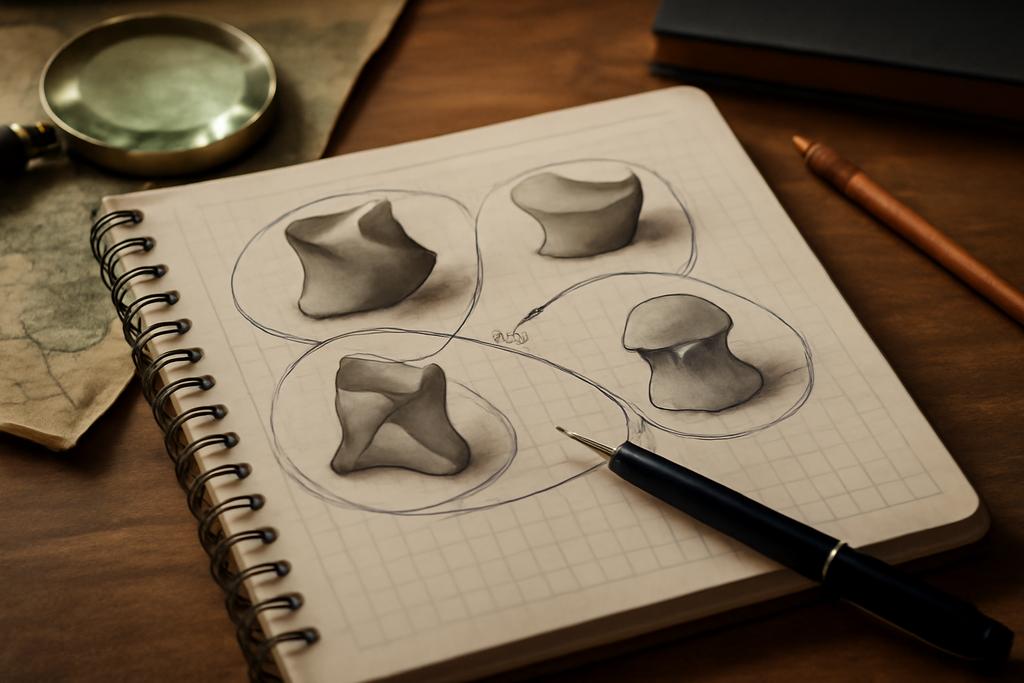Researchers at Tohoku University, the University of Tokyo, the University of Nottingham, and Academia Sinica have created a new classification of surfaces, called Horikawa surfaces, pushing the boundaries of our understanding of their geometry. These surfaces are a type of algebraic surface—a shape defined by polynomial equations—that sit intriguingly close to a line representing a fundamental inequality in algebraic geometry, the Noether inequality. Think of it like finding all the quirky, oddly shaped houses right on the edge of a perfectly planned neighborhood. This paper, by Hiroto Akaike, Makoto Enokizono, Masafumi Hattori, and Yuki Koto, delves into the ‘degenerated’ versions of these surfaces, ones that are essentially broken or incomplete versions of the perfect shapes, and maps out where they fall within the overall landscape.
These ‘degenerated’ versions are crucial because they provide the missing pieces necessary for constructing a complete picture of the mathematical space where these surfaces live, what’s known as the moduli space. The moduli space is a sort of catalog of all possible variations of a shape, like a color chart for all the hues of a paint—except instead of colors, we have different geometric surfaces.
Why This Matters: Beyond Abstract Shapes
This isn’t just an abstract exercise in geometry. Classifying these surfaces, particularly their degenerations, has implications for various areas of mathematics, including:
Differential Topology: The shapes of Horikawa surfaces, even their broken versions, hold clues about how they can be twisted and deformed into one another, impacting our understanding of their fundamental structure as four-dimensional objects. The paper attempts to tackle the long-standing Horikawa problem — whether Horikawa surfaces with similar properties are actually identical from a topological perspective.
Higher-Dimensional Geometry: Surfaces often serve as building blocks for more complicated three-dimensional (and higher-dimensional) objects. Understanding how these surfaces can ‘degenerate’ is a way to understand the more intricate structures that contain them. The insights from this paper could provide crucial tools for tackling similar classification problems in higher dimensions.
Moduli Spaces and Their Boundaries: The study of moduli spaces is crucial for understanding how different variations of a geometric shape relate to one another. The paper provides an exceptionally detailed analysis of the boundaries of this particular moduli space, illuminating the ‘edge cases’—the less-obvious, but equally important members—of this geometric landscape.
The Unexpected: Log Canonical Singularities and Q-Gorenstein Smoothability
One of the surprises in this research revolves around the types of singularities — imperfections or ‘breaks’ — found in the degenerate Horikawa surfaces. These imperfections are carefully categorized using the concept of ‘log canonical singularities’, a more nuanced way of describing singularities than simply calling them ‘singular’. The authors introduce the concept of ‘Q-Gorenstein smoothability’, which indicates whether these ‘broken’ surfaces can be ‘smoothed’ out or ‘repaired’ into smoother versions using a specific mathematical process. Not all ‘broken’ surfaces can be smoothed out, and this fact is crucial for the paper’s classification.
The Methodology: Log Noether Inequalities and Extended T-Chains
To create this refined classification, Akaike, Enokizono, Hattori, and Koto employ a number of sophisticated tools, including:
Log Noether Inequalities: These are refined versions of a classical inequality in algebraic geometry, offering tighter bounds on how ‘broken’ the surfaces can be, providing more structure to navigate the landscape of degenerate surfaces.
Extended T-chains: These are combinatorial objects—mathematical structures built from combining numerical sequences—that capture the essence of the singularities present on these degenerate surfaces. They are a way of analyzing the intricacy of these ‘broken’ shapes, making them more manageable mathematically.
Anti-P-resolutions: The authors introduce a novel concept: ‘anti-P-resolutions.’ These are a new type of mathematical transformation that allows for analyzing the deformations of surfaces by ‘un-doing’ some of their structure, in a way that allows for a clearer understanding of the relationships between different surfaces.
The Results: A Deeper Dive into the Classification
The classification itself is quite intricate, involving a breakdown of Horikawa surfaces into different categories based on their behavior and type of imperfections (singularities).
The paper is structured to progressively reveal the core ideas. It begins with definitions of important concepts, introducing the notion of extended T-chains. Next, it establishes inequalities useful for studying Horikawa surfaces, which are then classified into standard and non-standard types. Standard Horikawa surfaces are relatively simple to classify and are connected with the classical work of Horikawa. Non-standard Horikawa surfaces are more challenging and necessitate refined tools like the new anti-P-resolution, which enable analysis of the Q-Gorenstein smoothability of the surface. Ultimately, the paper culminates in a detailed stratification of the moduli space, revealing a profound structure underlying these complex shapes.
Implications: Future Directions
This work is not only a significant advancement in the classification of algebraic surfaces; it also provides fresh tools and approaches for studying related problems, such as the Horikawa problem in differential topology, the study of threefolds (three-dimensional objects) near the Noether line, and Torelli-type theorems that explore the relationships between geometric shapes and their associated abstract algebraic structures. The introduction of anti-P-resolutions opens up entirely new avenues for exploring degenerations of geometric objects in both algebraic geometry and related fields.










